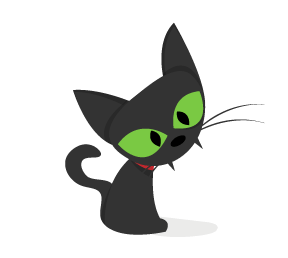If you're going to use color effectively in your designs, you'll need to know some color concepts and color theory terminology. A thorough working knowledge of concepts like chroma, value and saturation is key to creating your own awesome color schemes. In Part 1: The Meaning of Color of our color theory series, we covered the meanings of different colors. Here, we'll go over the basics of what affects a given color, such as adding gray, white or black to the pure hue, and its effect on a design, with examples of course.
Hue
Hue is the most basic of color terms and basically denotes an object's color. When we say "blue," "green" or "red," we're talking about hue. The hues you use in your designs convey important messages to your website's visitors. Read part 1 of this article for the meanings conveyed by various hues.
Examples

The primary hue of the background and some of the typography on the Happy Twitmas website is bright red.

Using a lot of pure hues together can add a fun and playful look to a design, as done in the header and elsewhere on this website.

Pure red is a very popular hue in Web design.

Mix uses a number of pure hues in its header and logo.

Green in its purer forms is seen less often and so stands out more than some other colors.
Chroma
Chroma refers to the purity of a color. A hue with high chroma has no black, white or gray in it. Adding white, black or gray reduces its chroma. It's similar to saturation but not quite the same. Chroma can be thought of as the brightness of a color in comparison to white.
In design, avoid using hues that have a very similar chroma. Opt instead for hues with chromas that are the same or a few steps away from each other.
Examples

Cyan has a high chroma and so really stands out against black and white.

Another website with a high chroma blue, though it includes some tints and shades with somewhat lower chromas.

Combining high and low saturation in the same hue can make for a sophisticated and elegant design.

Colors with very high chroma are best used in moderation, as done here.

Differences in chroma can make for a visually pleasing gradient.
Saturation
Saturation refers to how a hue appears under particular lighting conditions. Think of saturation in terms of weak vs. strong or pale vs. pure hues.
In design, colors with similar saturation levels make for more cohesive-looking designs. As with chroma, colors with similar but not identical saturations can have a jarring effect on visitors.
Examples

The saturation levels of many of the different hues used here are similar, adding a sense of unity to the overall design.

Combining colors with similar muted saturation levels creates a soft design, which is emphasized by the watercolor effects.

Hues with lower saturation levels aren't necessarily lighter, as shown here.

An excellent example of how using a hue with a high saturation against a background with low saturation can make the former really stand out.

Aother example of how low saturation colors make nearby high saturation colors really stand out.
Value
Value could also be called "lightness." It refers to how light or dark a color is. Ligher colors have higher values. For example, orange has a higher value than navy blue or dark purple. Black has the lowest value of any hue, and white the highest.
When applying color values to your designs, favor colors with different values, especially ones with high chroma. High contrast values generally result in more aesthetically pleasing designs.
Examples

The high value of the yellow used here really stands out against the lower-value black and gray.

This website combines blue hues with two different values. Because the different values have enough contrast, the overall look is visually appealing.

Combining colors with similar values makes for an energetic and lively background (which is enhanced by the design itself).

The red here has a lower value than the light blue, which itself has a lower value than the white.
![]()
The human eye can pick up differences in value even among such similar hues.
Tones
Tones are created when gray is added to a hue. Tones are generally duller or softer-looking than pure hues.
Tones are sometimes easier to use in designs. Tones with more gray can lend a certain vintage feel to websites. Depending on the hues, they can also add a sophisticated or elegant look.
Examples

Tones can give websites a sophisticated look while adding some vintage and antique flair.

This website combines blues in a variety of tones, shades and tints.

Tones can be intensified by adding gray around them, as done here.

The tones used in the navigation and background design here give this website a vintage, hand-made feel.

A great example of how a pure hue can really stand out against a background of tones.

Some colors that we might consider gray are actually tones of other colors. In this case, the background is a blue tone but with a lot of gray added.
Shades
A shade is created when black is added to a hue, making it darker. The word is often incorrectly used to describe tint or tone, but shade only applies to hues made darker by the addition of black.
In design, very dark shades are sometimes used instead of black and can serve as neutrals. Combining shades with tints is best to avoid too dark and heavy a look.
Examples

Jonathan Moore's website has a variety of different shades of purple in the background (and a couple of tints in other parts).

Using different shades together works well, as long as sufficient contrast between them is maintained.

An effective combination of shades and tints, particularly in the header.

Another background design that has shades (and a few tints) in a textured gradient.

Combining shades within textures adds interest to this website.
Tints
A tint is formed when white is added to a hue, lightening it. Very light tints are sometimes called pastels, but any pure hue with white added to it is a tint.
Tints are often used to create feminine or lighter designs. Pastel tints are especially used to make designs more feminine. They also work well in vintage designs and are popular on websites targeted at parents of babies and toddlers.
Examples

Caio Cardoso's website has a variety of green tints in the background and in other elements.

The blue tint on Fernando Silanes's website creates a soft and sophisticated look.

Blue tints are popular for sky and nature motifs.

Tints are also popular in watercolor-based designs.

Tints combined together make for a sophisticated gradient.
Conclusion
While you don't necessarily have to remember all of these technical terms, you should be familiar with the actual concepts, especially if you want to master part 3 of this series (in which we create our own color schemes). To that end, here's a cheat sheet to jog your memory:
- Hue is color (blue, green, red, etc.).
- Chroma is the purity of a color (a high chroma has no added black, white or gray).
- Saturation refers to how strong or weak a color is (high saturation being strong).
- Value refers to how light or dark a color is (light having a high value).
- Tones are created by adding gray to a color, making it duller than the original.
- Shades are created by adding black to a color, making it darker than the original.
- Tints are created by adding white to a color, making it lighter than the original.
Further Resources
- Glossary of Color Terms
An excellent reference from Color Cube. - Design Tip: Saturate Your Colors
An older article, but still has some valuable information. - Elements of Design: Value and Color
An excellent lesson in color from the University of Saskatchewan. - Color
An article from Design Notes about color and how we perceive it.
The Whole Series
- Color Theory for Designers, Part 1: The Meaning of Color
- Color Theory For Designers, Part 2: Understanding Concepts And Terminology
- Color Theory for Designer, Part 3: Creating Your Own Color Palettes
 (al)
(al)



